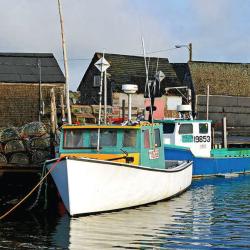Source Institutions
Source Institutions
Add to list Go to activity
Activity link broken? See if it's at the internet archive

In this activity, learners use a model for how fishing affects marine life populations, and will construct explanations for one of the reasons why fish populations are declining. Learners also design solutions for ways of making fisheries more sustainable for the animals and the people who depend on them. This detailed lesson guide includes key vocabulary, background information for educators, wrap-up suggestions and resources. The activity lesson plan and materials are in both English and Tagalog.
- 10 to 30 minutes
- 30 to 45 minutes
- $5 - $10 per group of students
- Ages 8 - 14
- Activity, Game, Lesson/Lesson Plan, Simulation
- English
Quick Guide
Materials List (per group of students)
- one bag of popped, plain popcorn (amount depends on class size)
- one or two bags of oyster crackers (amount depends on class size)
- one or two bags of Goldfish crackers (amount depends on class size)
- small cups, 1 per student
- serving bowls, medium size (or dinner plates), 1 per group
- spoons, 1 per student
- spatulas, 1 per group
- tongs, or chopsticks 1 per group
- watch, for timing the activity
- handout Fishing Log, 1 per student
Subjects
-
Earth and Space Science
-
Earth Structure
- Oceans and Water
-
Earth Structure
-
Life Sciences
-
Diversity of Life
- Plants
- Animals
-
Ecology
- Ecosystems
- Populations
- Human Impact
-
Diversity of Life
-
Mathematics
-
Data Analysis and Probability
- Data Analysis
- Data Collection
- Data Representation
-
Data Analysis and Probability
-
The Nature of Science
-
Science and Society
- Risks and Benefits
- Public Policy
-
The Scientific Process
- Conducting Investigations
- Gathering Data
- Formulating Explanations
- Communicating Results
-
Science and Society
-
The Nature of Technology
-
Technology and Society
- Technology and the Environment
-
Technology and Society
Informal Categories
- Animals
- Food and Cooking
- Games
- Nature and Environment
Audience
To use this activity, learners need to:
- see
- read
- taste
- touch
Learning styles supported:
- Involves teamwork and communication skills
- Uses STEM to solve real-world problems
- Involves hands-on or lab activities
Other
Components that are part of this resource:
Includes alignment to state and/or national standards:
Access Rights:
- Free access
By:
Rights:
- All rights reserved, California Academy of Sciences, 2020
